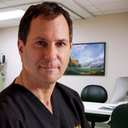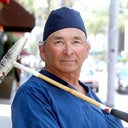I have been told that once upper and lower eyelid surgery has been performed, that subsequent eyelid surgeries are not recommended as they often do not go well. Is that true? I had an upper and lower bleph done 20 years ago and it looked great for many years. Now at 63 years old, due to aging and a bad fat transfer procedure, I am considering a 2nd upper/lower bleph... but am worried about trying it a 2nd time. What are your thoughts on 2nd bleph surgeries?
Answers (10)
From board-certified doctors and trusted medical professionals
Dr. Kenneth D. Steinsapir, MD

Dr. Kenneth D. Steinsapir, MD
Oculoplastic Surgeon, Board Certified in Ophthalmology
Answer
Dr. Amir Nakhdjevani, MBBS, MRCS, FRCS(Plast)

Dr. Amir Nakhdjevani, MBBS, MRCS, FRCS(Plast)
Specialist Registered Plastic Surgeon
Answer
Dr. A.J. Amadi, MD

Dr. A.J. Amadi, MD
Oculoplastic Surgeon, Board Certified in Ophthalmology
Answer
Dr. Toby Mayer, MD

Dr. Toby Mayer, MD
Board Certified Facial Plastic Surgeon
Answer
Dr. Mark Beaty, MD

Dr. Mark Beaty, MD
Board Certified Facial Plastic Surgeon
Answer
Dr. Sam Goldberger, MD
Dr. Sam Goldberger, MD
Oculoplastic Surgeon, Board Certified in Ophthalmology
Answer
Dr. Steven Wallach, MD
Dr. Steven Wallach, MD
Board Certified Plastic Surgeon
Answer
Dr. Amiya Prasad, MD - Account Suspended
Dr. Amiya Prasad, MD - Account Suspended
Oculoplastic Surgeon, Board Certified in Ophthalmology
Answer
Dr. Perry Liu, MD FACS - Account Suspended
Dr. Perry Liu, MD FACS - Account Suspended
Board Certified Plastic Surgeon
Answer
More Eyelid Surgery Questions
See all Eyelid Surgery Q&AWE SEND PRETTY
EMAILS
What’s trending? Who’s turning heads? Which TikTok myths need busting? We’ve got you. No fluff, no gatekeeping—just real talk. Get our free, unfiltered newsletter.
